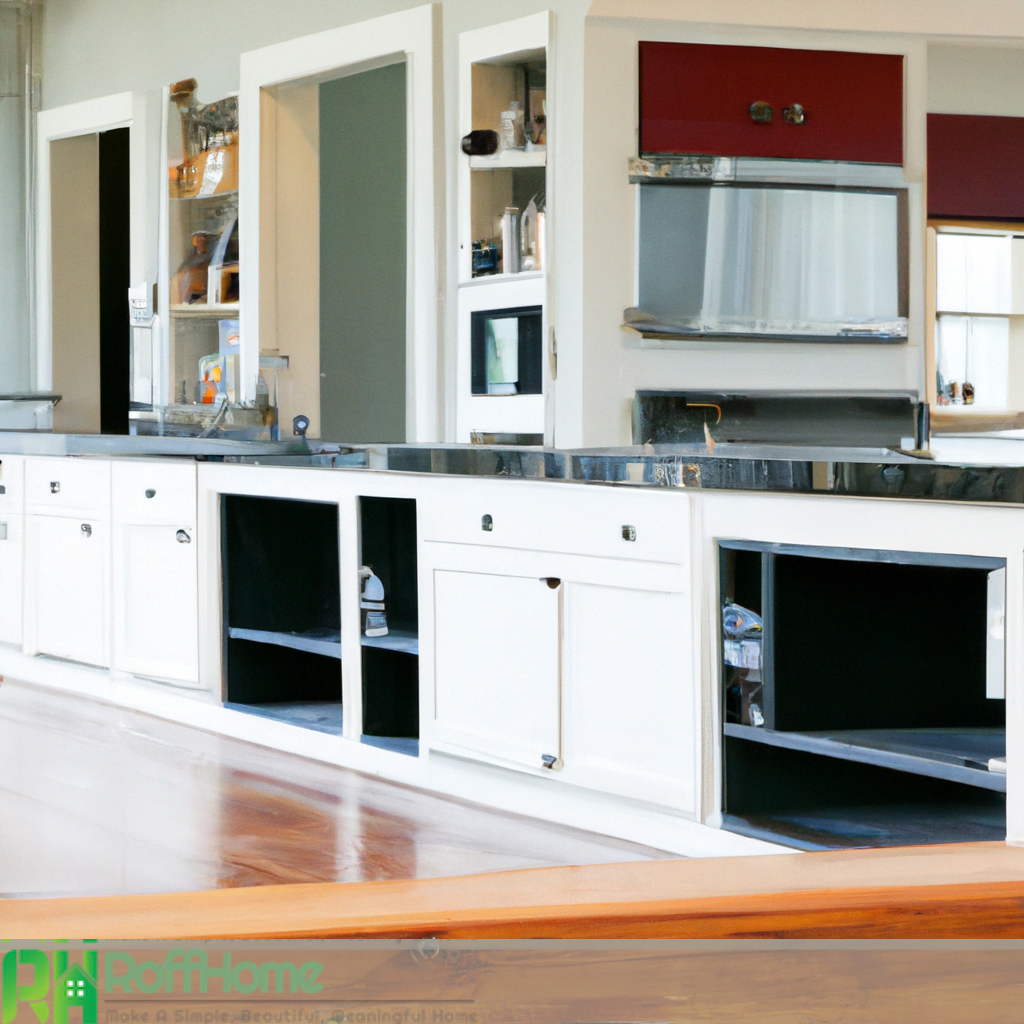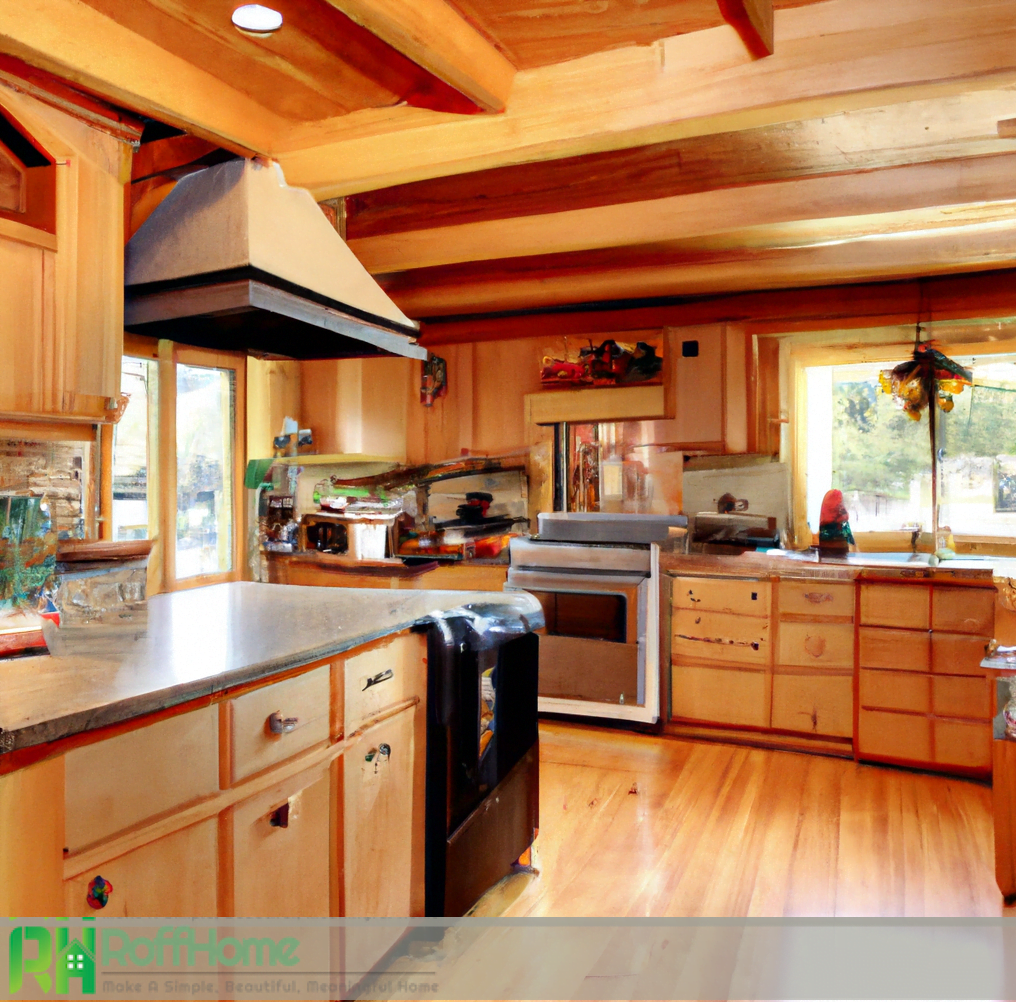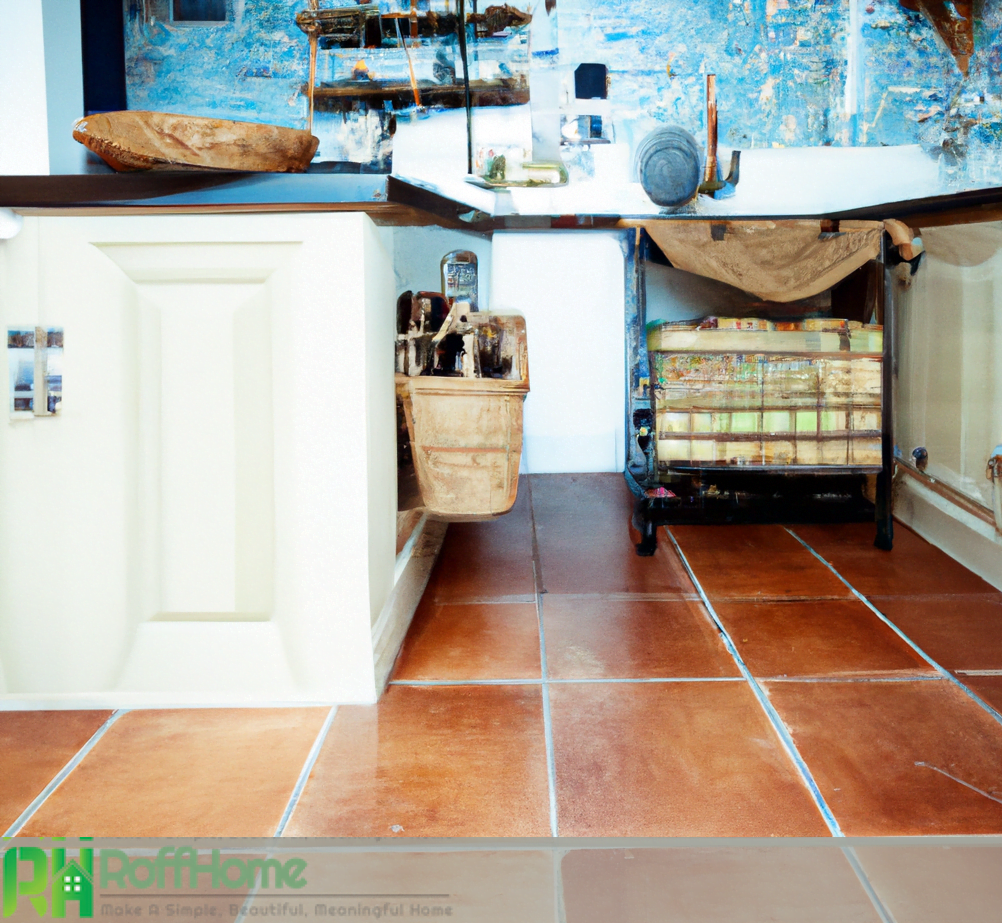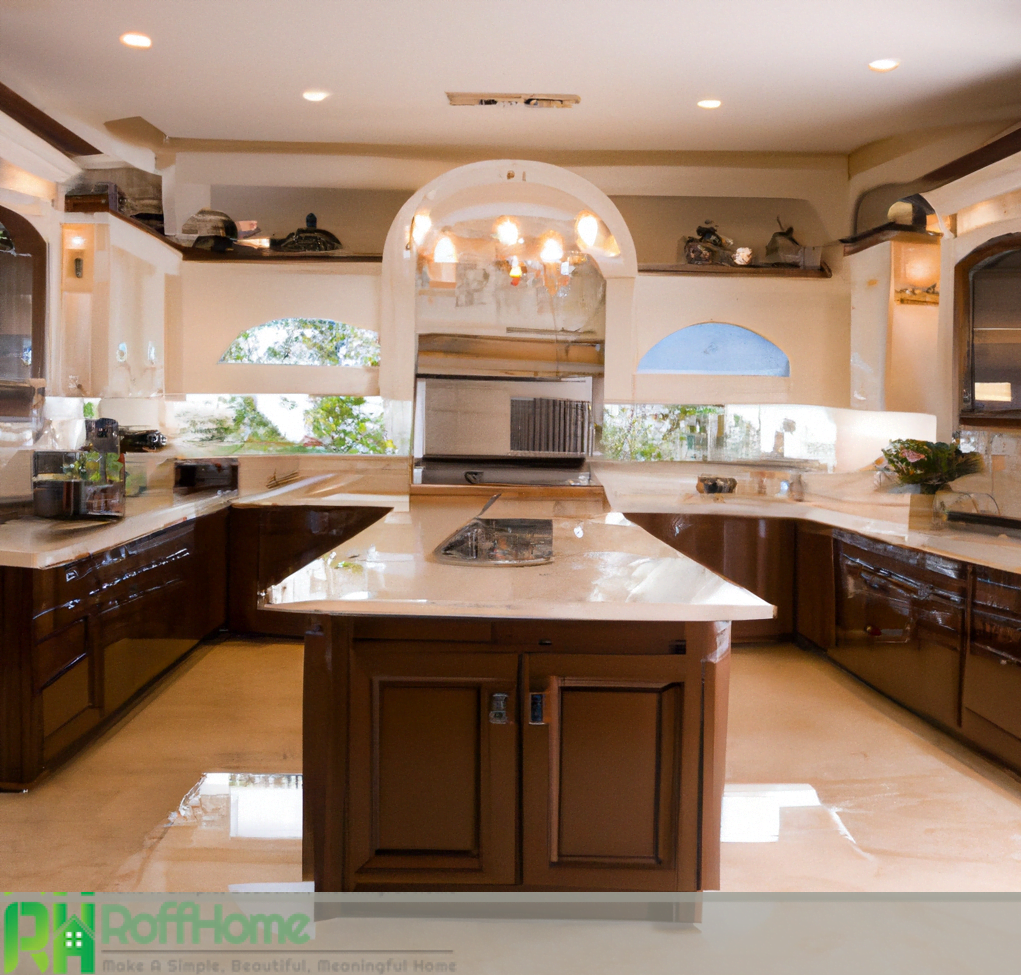Luxury Transitional Kitchens – Elevate Your Home with Style and Functionality
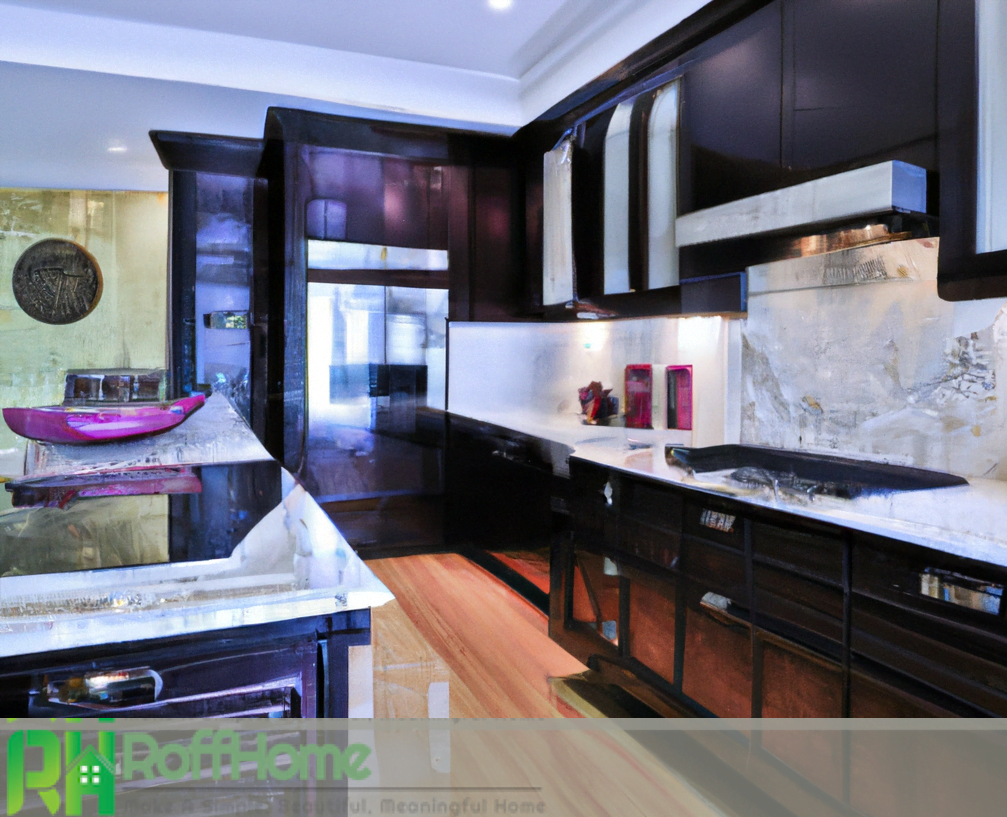
Luxury transitional kitchens are the epitome of style and sophistication, blending classic design elements with modern technology and materials. These kitchens are designed to incorporate high-end appliances, ample storage and functionality, and innovative materials, all while creating a luxurious atmosphere that is both stylish and comfortable. With its blend of traditional and contemporary design elements, a luxury transitional kitchen can be both elegant and functional.
From the incorporation of beautiful lighting and color schemes to the use of top-notch materials like marble and stainless steel, the luxury transitional kitchen is the perfect example of creating a luxurious space without sacrificing practicality. With inspiring examples from around the world and the latest trends and innovations in kitchen design, a luxury transitional kitchen is the ultimate statement piece for those who want to incorporate a touch of luxury into their home.
Whether you’re looking to upgrade your existing kitchen or create a new one from scratch, incorporating the best practices, tips, and innovations in kitchen design will help you achieve the ultimate luxurious and stylish space.
Trends and innovations in luxury transitional kitchen design
The world of kitchen design is constantly evolving, and trends and innovations are always shaping how we design and build luxury transitional kitchen. Some of the latest trends and innovations in luxury transitional kitchen design include:
Smart Technology: Integrating smart technology is one of the biggest trends in kitchen design. From voice-controlled appliances to connected lighting, homeowners can now control every aspect of their kitchen with just a few commands.
Minimalism: The trend towards minimalism is also having a big impact on kitchen design. With clean lines and an emphasis on simplicity, minimalism is helping to create a more spacious and calming feel in luxury transitional kitchen.
Sustainable Materials: Sustainability is becoming an increasingly important consideration for luxury transitional kitchen design, and as a result, there is a growing trend toward using environmentally friendly materials. There are many options for creating a greener kitchen, from recycled glass and sustainable woods to low-emission paints and adhesives.
Custom Cabinetry: Custom cabinetry is becoming increasingly popular as homeowners seek to create a truly unique and personalized kitchen space. With the ability to choose from a wide range of materials, colors, and finishes, custom cabinetry is a great way to create a one-of-a-kind kitchen.
Bold Colors: Bold and statement-making colors are also making a big impact in luxury transitional kitchen design. From jewel-tone cabinets to brightly colored backsplashes, these pops of color can help to create a bold and beautiful space that truly stands out.
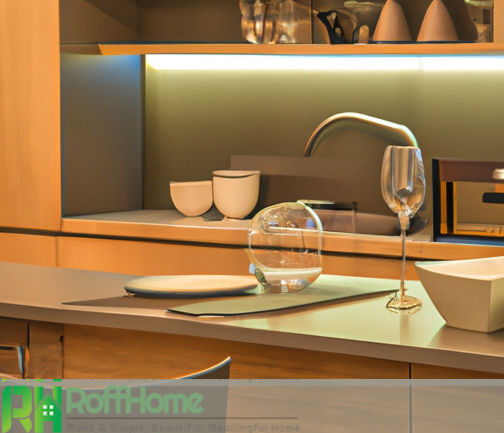
The role of color and lighting in creating a luxurious feel
Color and lighting are two of the most important elements in creating a luxurious feel in a kitchen. They can help create a warm, inviting, and sophisticated space when used correctly. Here’s how:
Color: Choosing the right color palette is key to creating a luxurious feel in a kitchen. Opt for warm and rich tones, such as gold, bronze, or rich shades of blue, green, or purple. These colors create a cozy and inviting atmosphere.
Lighting: Proper lighting is also essential in creating a luxurious feel in a kitchen. A mix of task lighting, such as under-cabinet lights, and ambient lighting, such as pendant lights or a chandelier, can create a warm and inviting atmosphere. Dimmers are also a great option, allowing you to control the intensity of the lighting in your kitchen and create different moods.
Accent Lighting: Accent lightings, such as in-cabinet lighting or backlit countertops, can also help to add a luxurious touch to your kitchen. This lighting highlights key features and creates a warm, inviting, and sophisticated space.
Statement Fixtures: Investing in high-end lighting fixtures, such as a chandelier or statement pendant lights, can also help to create a luxurious feel in a kitchen. These fixtures can serve as a visual focal point and help add glamour to your space.
Natural Light: Taking advantage of natural light is important in creating a luxurious feel in a kitchen. Large windows or skylights can bring in plenty of natural light, making your space open and airy.
Cost considerations for luxury transitional kitchen
These can be a significant investment, but with careful planning and budgeting, you can create a functional and beautiful space. Here are some cost considerations to keep in mind:
Materials: The materials you choose will have a big impact on the overall cost of your kitchen. High-end materials such as solid wood cabinetry, quartz or marble countertops, and top-of-the-line appliances can quickly add up but will also increase the value of your home.
Labor: Labor cost is another important consideration, as skilled professionals must install the various elements of a luxury transitional kitchen. This includes cabinetry installation, countertop fabrication, and electrical and plumbing work.
Technology: Integrating technology and smart home features into a kitchen can also increase the overall cost. Features such as voice-activated appliances, under-cabinet lighting, and smart home systems come with a price tag.
Finishing Touches: The small details can add up, such as hardware for cabinets and drawers, lighting fixtures, and backsplash tiles. Consider these costs when planning your budget.
Budget Flexibility: It’s important to have some flexibility in your budget, as unexpected costs can arise during the renovation process. Allow for a contingency fund to cover these unforeseen expenses.
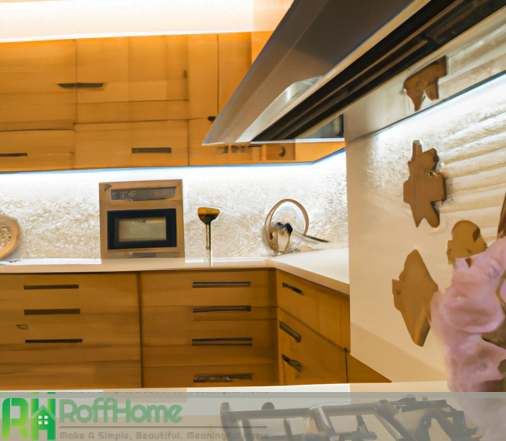
Key features of luxury transitional kitchen
Luxury transitional kitchen are designed to provide style and functionality, combining traditional and contemporary elements to create a sophisticated and elegant space. Here are some key features to consider:
High-end materials: Luxury transitional kitchen often feature premium materials, such as solid wood cabinetry, quartz or marble countertops, and top-of-the-line appliances. These materials not only look stunning but also provide durability and longevity.
Ample storage: One of the hallmarks of a luxury transitional kitchen is ample storage space. Large cabinetry, pantry areas, and functional islands are all important elements in creating a beautiful and functional kitchen.
Innovative technology:These often incorporate the latest technology and smart home features, such as voice-activated appliances, under-cabinet lighting, and smart home systems. These features help to create a more efficient and convenient kitchen.
Elegant lighting: A well-designed lighting plan is essential in creating a luxurious feel in a kitchen. This includes a mix of ambient lighting, task lighting, and accent lighting to create a warm and inviting atmosphere.
Stylish hardware: Attention to detail is important in creating a luxurious kitchen, including the hardware for cabinets and drawers. Choose high-end hardware that complements your kitchen’s overall style and adds a touch of glamour.
Versatile workspace: A spacious and functional workspace is another key feature of a luxury transitional kitchen. An oversized island, ample countertop space, and well-designed cabinets can help create a beautiful and practical workspace.
Seamless integration: Seamless integration is key to a successful luxury transitional kitchen. Every element, from the materials and finishes to the technology and lighting, should work together to create a cohesive and elegant space.
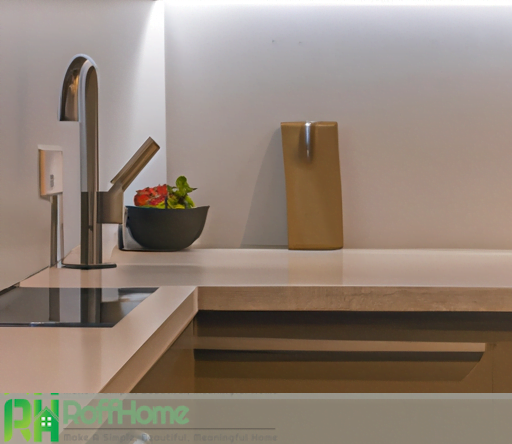
The importance of functionality and ergonomics in luxury kitchen design
Functionality and ergonomics are critical components of a luxury kitchen design, as they ensure that the space is both practical and comfortable. Here are some ways to incorporate functionality and ergonomics into your kitchen design:
Work Triangle: The work triangle, which connects the sink, stove, and refrigerator, is an important factor in ensuring a functional kitchen layout. A well-designed work triangle helps to minimize movement and increase efficiency.
Ample Counter Space: Ample counter space is crucial for preparing food and for use as a work surface. Consider incorporating a large island or multiple countertops to provide ample workspace.
Storage Solutions: A functional kitchen requires efficient storage solutions, such as pull-out pantry drawers, corner cabinetry, and functional islands. These elements help to maximize storage space and make it easy to find what you need.
Ergonomic Considerations: Comfort and ease of use are essential in a luxury kitchen. Consider incorporating ergonomic elements such as adjustable cabinets, pull-out shelves, and raised dishwashers to make your kitchen as comfortable as possible.
Accessibility: A functional kitchen should also be accessible to everyone who uses it. This includes wide pathways, low-level countertops, and accessible storage solutions.
Lighting: Good lighting is important for both functionality and ergonomics. A well-designed lighting plan helps to illuminate the workspace, making it easier to prepare food and complete other tasks.
Best practices for maintaining and cleaning luxury transitional kitchen
Maintaining and cleaning a luxury transitional kitchen requires careful attention to detail and a commitment to keeping the space in pristine condition. Here are some best practices for maintaining and cleaning luxury kitchens:
Regular Dusting and Wiping: Regular dusting and wiping helps to keep surfaces free of dust, dirt, and grime and helps to maintain the kitchen’s sleek and polished appearance.
Use of Non-Abrasive Cleaners: Luxury kitchens are often made from high-end materials such as stone, wood, and metal, so it’s important to use non-abrasive cleaners to protect these surfaces.
Proper Maintenance of Countertops: Countertops are often one of the most heavily used surfaces in the kitchen, so it’s important to maintain them properly. Regular cleaning and sealing will help to keep countertops looking their best.
Cleaning and Protecting Appliances: Luxury kitchens often include high-end appliances, so keeping them in good condition is important. Regular cleaning and the use of protective coatings will help to keep appliances looking their best.
Proper Storage: Proper storage is essential for maintaining the kitchen’s appearance. Use containers, bins, and baskets to store items and food in airtight containers to prevent spills and leaks.
Regular Inspections: Regular inspections will help identify areas that need attention and help keep the kitchen in good condition. Inspect cabinets, countertops, and appliances regularly to ensure they are in good condition.
How to blend traditional and contemporary elements in luxury transitional kitchen
Blending traditional and contemporary elements in a luxury transitional kitchen can be a delicate balance, but when done correctly, it can result in a truly stunning space. Here are some tips for blending these two design styles in your luxury transitional kitchen:
Mix and Match Materials: Combining traditional materials like wood and stone with contemporary materials like stainless steel and glass can help create a cohesive and balanced look.
Combine Classic and Modern Fixtures: Incorporating classic and modern fixtures, such as traditional cabinetry and contemporary lighting, can help create a space that feels both timeless and current.
Experiment with Textures: Textures can play a big role in blending traditional and contemporary elements in a kitchen. For example, pairing a sleek, modern countertop with a traditional textured backsplash can create a sense of contrast and balance.
Use Color to Tie the Space Together: Color can also be a great way to blend traditional and contemporary elements in a kitchen. Opt for a neutral color palette, with pops of color in key areas, such as the backsplash or cabinetry.
Incorporate Accent Pieces: Accent pieces, such as a traditional rug or modern artwork, can also help to bridge the gap between traditional and contemporary elements in a kitchen.
Play with Proportion: Experimenting with proportion can also help to create a balanced look in a luxury transitional kitchen. For example, using a mix of tall and short cabinets, or incorporating different-sized light fixtures, can help to create a sense of visual interest.
Inspiring examples of luxury transitional kitchen from around the world
Luxury transitional kitchen are a fusion of traditional and contemporary styles and can be found in homes worldwide. Here are some inspiring examples of luxury kitchens from different parts of the world:
Scandinavian Style Kitchen: Scandinavian-style kitchens are characterized by their clean lines and neutral color palette. These kitchens often incorporate natural materials like wood and stone and feature sleek and functional appliances.
Italian Kitchen: Italian kitchens are renowned for using high-end materials, such as marble and granite, and for their focus on quality craftsmanship. These kitchens often feature custom cabinetry and professional-grade appliances.
French Country Kitchen: French country kitchens are known for their warm and inviting feel. They often feature rustic elements, such as stone floors, distressed cabinetry, and vintage hardware, and incorporate a color palette inspired by the countryside.
English Cottage Kitchen: English cottage kitchens are charming and cozy and often feature a mix of traditional and modern elements. These kitchens incorporate materials such as wood and stone and often feature large windows to let in natural light.
Modern Farmhouse Kitchen: Modern farmhouse kitchens blend traditional and contemporary styles. They often feature natural materials, such as wood and stone, and incorporate modern elements, such as stainless steel appliances and sleek cabinetry.
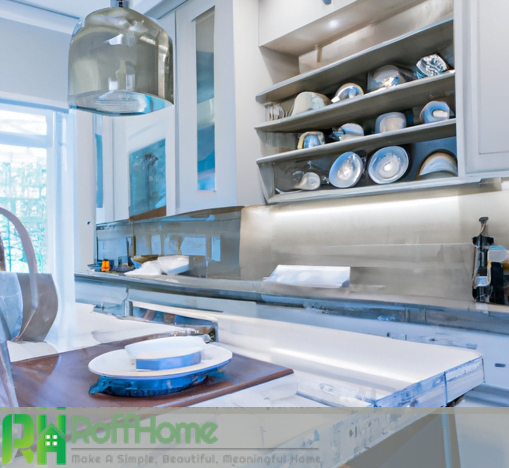
Benefits of luxury transitional kitchen
These offer numerous benefits for homeowners looking for a stylish and functional space for cooking and entertaining. Some of the key advantages include the following:
Timeless Design: The blend of traditional and contemporary styles in luxury transitional kitchen results in a timeless and sophisticated look. This type of design always stays in style and can be appreciated for years.
High-End Materials: These are typically built with high-end materials, such as custom cabinetry, marble countertops, and top-of-the-line appliances. These materials provide a beautiful and functional space and increase the home’s overall value.
Functionality: These kitchens are designed with the user in mind and offer a seamless transition between classic and modern design. This results in a functional space that is both aesthetically pleasing and practical.
Increased Home Value: The use of top-quality materials and sophisticated design in luxury transitional kitchen can increase the overall value of a home. This is especially important for homeowners looking to sell in the future.
Increased Entertaining Space: Luxury transitional kitchen often feature large islands and open floor plans, providing ample space for cooking and entertaining. This makes them ideal for hosting dinner parties and other events.
Customizable: Luxury transitional kitchen can be customized to fit homeowners’ specific needs and preferences. This includes using unique materials, such as custom cabinetry or lighting fixtures, to create a truly unique and personalized space.
Disadvantages of luxury transitional kitchen
Luxury transitional kitchen are a beautiful and functional blend of traditional and contemporary design elements, but they are not without disadvantages. Here are some of the drawbacks of luxury kitchens:
High Cost: Luxury kitchens can be expensive in terms of the initial cost of materials and appliances and the ongoing cost of maintenance and upkeep.
Limited Space: Luxury kitchens often feature large appliances and storage systems, making them challenging to fit into smaller spaces.
Maintenance Requirements: Luxury kitchens are often made from high-end materials that require careful maintenance and cleaning, which can be time-consuming and costly.
Limited Design Flexibility: Luxury kitchens often incorporate high-end materials and appliances, limiting design flexibility and making it more challenging to change the kitchen in the future.
Energy Efficiency: Some luxury kitchens feature less energy-efficient appliances than their more affordable counterparts, which can be a concern for those looking to reduce their carbon footprint.
Technology Overload: Some luxury kitchens feature many high-tech features and appliances, which can be overwhelming and challenging for those who need to be tech-savvy.
Luxury transitional kitchen combine traditional and modern elements to create a timeless and elegant design. These kitchens offer a luxurious space for cooking and entertaining, featuring top-of-the-line materials, state-of-the-art appliances, and a seamless blend of classic and contemporary styles. Neutral colors, warm woods, and clean lines create a warm and inviting atmosphere. Overall, luxury transitional kitchen provide a sophisticated and functional space that is both beautiful and functional.

